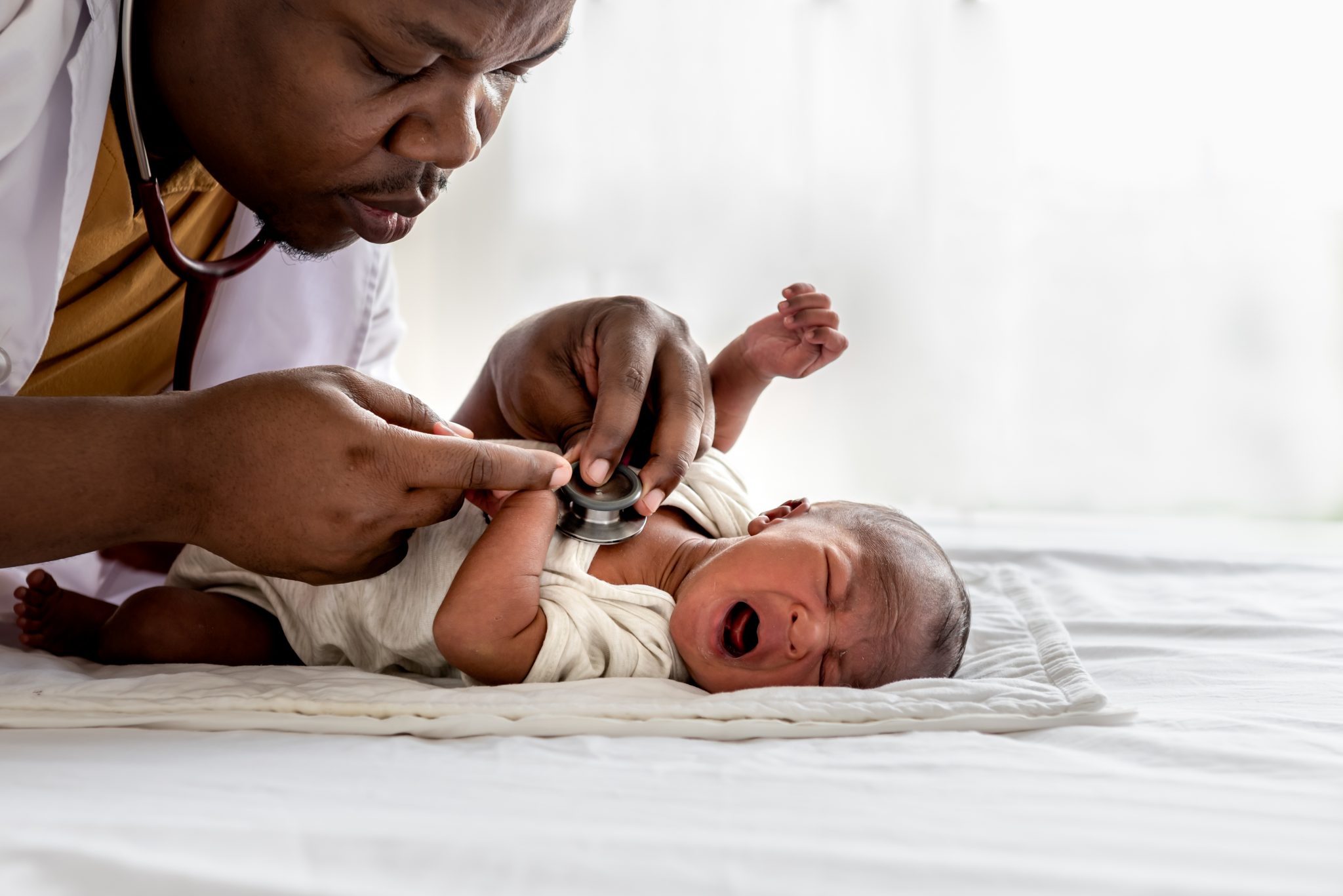Group B Strep in Infants
What are the symptoms of group B strep in newborns?
Group B streptococcus (GBS) is a type of bacteria that can cause infection, particularly in newborns, pregnant women, the elderly, and people with weakened immune systems. Symptoms of GBS infection can vary depending on the type and location of the infection. In newborns, GBS infection can cause:
- Early-onset GBS disease (within the first week of life):
- Fever
- Difficulty feeding
- Lethargy or irritability
- Respiratory distress (difficulty breathing)
- Cyanosis (bluish skin color)
- Seizures
- Late-onset GBS disease (between 1 week and 3 months of age):
- Fever
- Difficulty feeding
- Lethargy or irritability
- Respiratory distress
- Seizures
- Signs of meningitis (such as stiff neck, irritability, and poor feeding)
In pregnant women, GBS infection may not cause any symptoms, but it can lead to complications such as urinary tract infections, amnionitis (infection of the amniotic fluid and membranes), and postpartum infections.
In adults, GBS infection can cause a variety of infections, including:
- Urinary tract infections
- Skin and soft tissue infections
- Bone and joint infections
- Pneumonia
- Bloodstream infections (bacteremia)
- Meningitis
Symptoms of GBS infection in adults can vary depending on the type and location of the infection but may include fever, chills, pain or swelling at the site of infection, and general malaise.
It’s important to seek medical attention from your healthcare provider if you or your child experience symptoms of GBS infection, especially if you are pregnant or have a weakened immune system, as GBS infection can be serious if not treated promptly.
What are the causes of group B strep in newborns?
Group B streptococcus (GBS) is a type of bacteria that is commonly found in the digestive and lower genital tracts of healthy adults. In most cases, GBS does not cause any symptoms or illness in adults. However, GBS can be passed from a pregnant woman to her baby during childbirth, which is known as “vertical transmission.”
The exact mechanism of how GBS is transmitted from mother to baby is not fully understood, but it is believed to occur when the baby comes into contact with GBS in the birth canal during delivery. Factors that increase the risk of vertical transmission of GBS include:
- Colonization of the birth canal: Pregnant women who are colonized with GBS in their birth canal are at an increased risk of passing the bacteria to their babies during childbirth.
- Premature rupture of membranes: When the amniotic sac ruptures (water breaks) before the onset of labor, there is an increased risk of GBS transmission to the baby.
- Prolonged rupture of membranes: If the amniotic sac remains ruptured for an extended period before delivery, the risk of GBS transmission increases.
- Intrapartum fever: Maternal fever during labor can be a sign of infection, including GBS infection, and increases the risk of transmission to the baby.
- Previous infant with GBS disease: Women who have previously had a baby with GBS disease are at an increased risk of having GBS-colonized infants in subsequent pregnancies.
- Positive GBS screening test: Pregnant women who test positive for GBS colonization during routine prenatal screening are at an increased risk of transmitting the bacteria to their babies during childbirth.
It’s important for pregnant women to undergo prenatal screening for GBS colonization between 35 to 37 weeks of pregnancy to identify those at risk of transmitting GBS to their babies. Antibiotic prophylaxis during labor is recommended for women who are colonized with GBS to reduce the risk of transmission to the baby and the development of early-onset GBS disease in newborns.
What is the treatment for group B strep?
Group B streptococcus (GBS) is typically treated with antibiotics, especially in cases where the infection is causing symptoms or complications. The choice of antibiotic and duration of treatment depend on the specific circumstances of the infection. Here are some common treatment approaches:
- Antibiotics during labor: Pregnant women who are colonized with GBS are usually given intravenous (IV) antibiotics during labor to reduce the risk of transmitting the bacteria to their newborns. The most commonly used antibiotics for this purpose are penicillin or ampicillin. If a woman is allergic to penicillin, other antibiotics such as cefazolin or clindamycin may be used.
- Antibiotics for newborns: Newborns who are at risk of early-onset GBS disease or who show signs of infection may be treated with antibiotics, usually given intravenously. The choice of antibiotic depends on the specific circumstances and may include ampicillin, penicillin, or cefotaxime.
- Antibiotics for adults: In adults, GBS infections are treated with antibiotics based on the type and location of the infection. Commonly used antibiotics include penicillin, ampicillin, ceftriaxone, or vancomycin, depending on the severity of the infection and the patient’s allergy status.
- Duration of treatment: The duration of antibiotic treatment varies depending on the type and severity of the infection. In some cases, antibiotics may be given for a few days, while in others, a longer course of treatment may be necessary.
It’s important to follow your healthcare provider’s instructions regarding antibiotic treatment for GBS to ensure the infection is properly treated and to reduce the risk of complications. It’s also important to complete the full course of antibiotics, even if you start feeling better, to prevent the infection from returning or becoming resistant to antibiotics.




